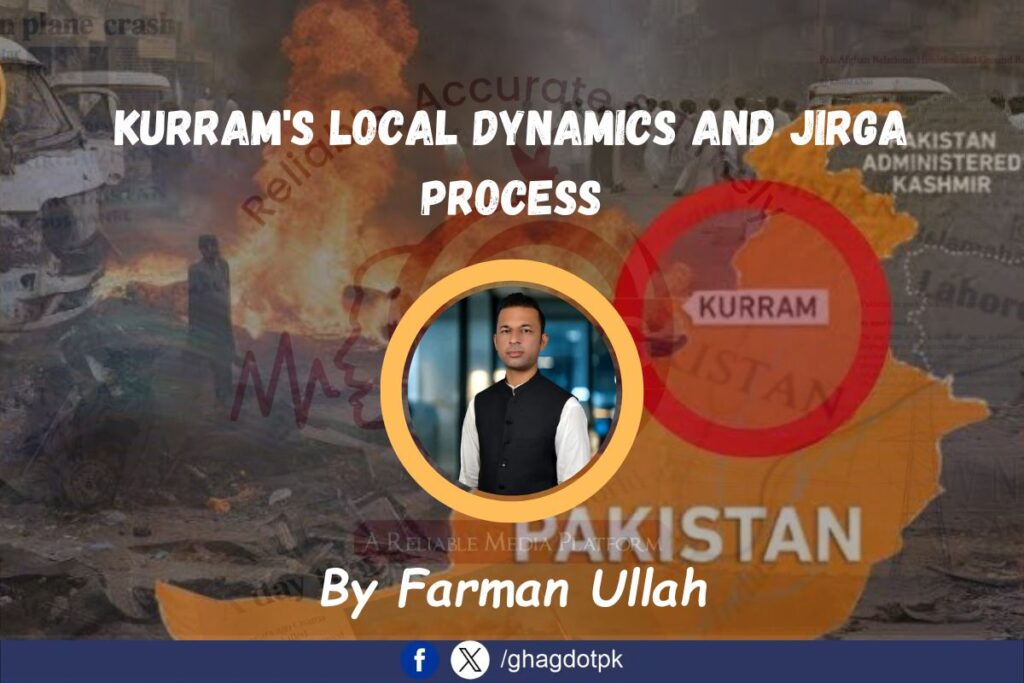By Farman Ullah
The recent attacks on convoys in Kurram, despite a peace deal, have raised critical questions about the sustainability of the agreement. These attacks highlight the fragile nature of the peace process and underscore the need for a nuanced, context-sensitive approach to address the underlying issues. To comprehend the complexities of the situation, it is essential to analyze local dynamics, the role of jirgas, and the socio-political intricacies of the area.
The Role and Challenges of Jirgas
Jirgas, traditional tribal assemblies, have been instrumental in conflict resolution across Pakistan’s merged areas. Their legitimacy is rooted in tribal support, which is eroded when decisions are influenced by external pressures, coercion, or financial incentives. Reports suggesting that the recent jirga was compromised by governmental urgency and allegations of bribery have significantly undermined its credibility. This is not an isolated incident, as the weakening of jirgas is a phenomenon that has been ongoing for years.
The targeted killings of tribal elders and maliks by militants have dismantled local leadership structures, creating a power vacuum that has been exploited by militant groups. This has further destabilized the region, making it challenging to achieve sustainable peace. Rebuilding the authority and legitimacy of jirgas is crucial for peace in Kurram. This can be achieved by ensuring the impartiality and independence of jirgas, providing protection and resources to tribal elders and maliks, and promoting their role in conflict resolution.
Sectarian Tensions and Power Dynamics
Kurram’s sectarian divide between Sunni and Shia communities adds another layer of complexity to the situation. The Sunni population, feeling marginalized, has reportedly been courted by militants offering support and protection. Meanwhile, Shia-dominated areas have increasingly militarized, partly due to the return of the battle-hardened Zainabiyoun Brigade and the influence of the Majlis Wahdat-e-Muslimeen (MWM). This polarization makes compromise challenging, as leaders on both sides risk alienation or loss of credibility within their communities.
The government’s current approach of political expediency rather than genuine reconciliation exacerbates the situation. A comprehensive strategy that addresses the root causes of conflict, including sectarian tensions and power dynamics, is necessary to achieve lasting peace.
The Way Forward: A Comprehensive Strategy
For lasting peace in Kurram, a multifaceted approach is required. This includes rebuilding trust in local institutions, engaging local stakeholders, addressing socio-economic grievances, strengthening security measures, and understanding tribal dynamics.
Rebuilding trust in local institutions is crucial, and this can be achieved by ensuring the impartiality and independence of jirgas. Efforts should be made to restore the authority of tribal elders and maliks, providing them with protection and resources.
Engaging local stakeholders, including community leaders, sectarian representatives, and civil society organizations, is essential to ensure broad-based support for peace initiatives. Addressing socio-economic grievances, such as poverty, unemployment, and lack of access to education, can reduce the appeal of militancy and foster community cohesion.
Strengthening security measures is critical, but this must be done in a balanced manner that protects vulnerable populations without escalating tensions. Understanding tribal dynamics is also essential, and this requires a dedicated team familiar with local customs and power structures.
The recent attacks in Kurram underscore the fragility of the peace process and the need for a nuanced, context-sensitive approach. True peace will require rebuilding trust, empowering local institutions, and addressing the root causes of conflict. Only through collaborative and inclusive efforts can the region hope to achieve long-term stability.






